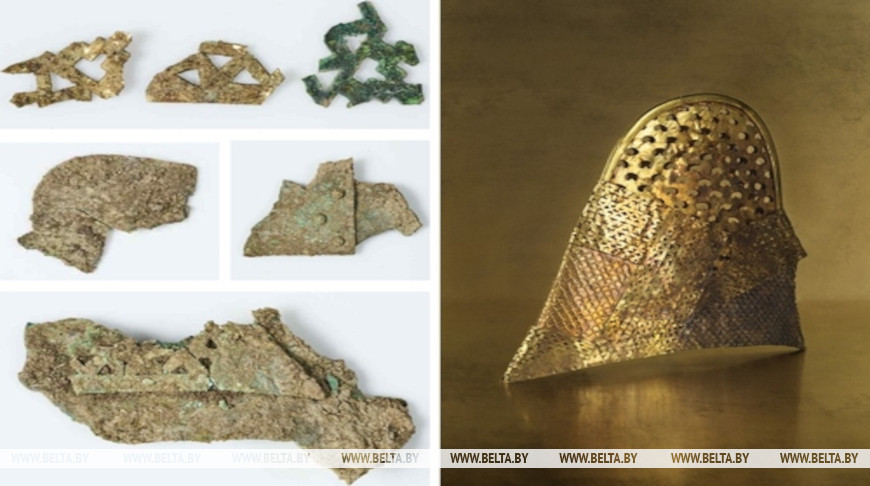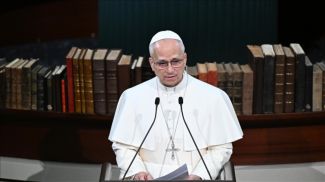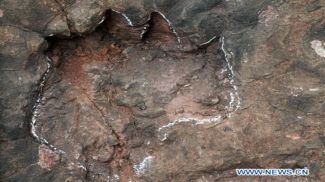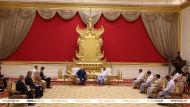
SEOUL, 20 October (BelTA - Yonhap) - Archaeologists have unearthed a
lavish tomb believed to belong to a Silla-era general dating back 1,600
years, the national heritage agency said Monday.
The tomb, thought to have been built for a high-ranking general who died around age 30, was discovered at the royal tomb complex in Gyeongju, the capital of the Silla Kingdom (57 B.C.-A.D. 935).
The find includes a rare, complete set of armor for both a warrior and his horse, shedding new light on the ancient Korean kingdom's military might.
"Considering the excavated artifacts and burial practices, we presume this is the tomb of a Silla general of the highest status who also performed a political role," the Korea Heritage Service (KHS) said in a press release. The excavation was conducted jointly with the Silla Cultural Heritage Research Institute.
Based on the developmental stages of Silla tombs and the artifacts unearthed, researchers believe the tomb was constructed in the late 4th or early 5th century.
The centerpiece of the find is only the second complete set of horse armor ever discovered in a Silla tomb, accompanied by a full suit of human armor, a helmet, a saddle, a bit and stirrups.
Academics expect it to be tangible evidence of Silla's elite, heavily armored cavalry units that were crucial to the kingdom's power.
The latest discovery was made near the previously excavated Hwangnam-dong Tomb No. 120 in the Daereungwon Tomb Complex in Gyeongju. The tomb was first identified during the Japanese colonial period (1910-45), but the site was later damaged when private homes were built over it and it eventually faded from memory.
Since 2018, the KHS and the city of Gyeongju have resumed excavations in the area, identifying two mounds - Tombs No. 120-1 and 120-2 - and uncovering a range of valuable relics.
The newly discovered site, named Hwangnam-dong Wooden Chamber Tomb No. 1, along with select artifacts, will be open to the public from Oct. 27 to Nov. 1 to coincide with the Asia-Pacific Economic Cooperation meetings in Gyeongju.
The tomb, thought to have been built for a high-ranking general who died around age 30, was discovered at the royal tomb complex in Gyeongju, the capital of the Silla Kingdom (57 B.C.-A.D. 935).
The find includes a rare, complete set of armor for both a warrior and his horse, shedding new light on the ancient Korean kingdom's military might.
"Considering the excavated artifacts and burial practices, we presume this is the tomb of a Silla general of the highest status who also performed a political role," the Korea Heritage Service (KHS) said in a press release. The excavation was conducted jointly with the Silla Cultural Heritage Research Institute.
Based on the developmental stages of Silla tombs and the artifacts unearthed, researchers believe the tomb was constructed in the late 4th or early 5th century.
The centerpiece of the find is only the second complete set of horse armor ever discovered in a Silla tomb, accompanied by a full suit of human armor, a helmet, a saddle, a bit and stirrups.
Academics expect it to be tangible evidence of Silla's elite, heavily armored cavalry units that were crucial to the kingdom's power.
The latest discovery was made near the previously excavated Hwangnam-dong Tomb No. 120 in the Daereungwon Tomb Complex in Gyeongju. The tomb was first identified during the Japanese colonial period (1910-45), but the site was later damaged when private homes were built over it and it eventually faded from memory.
Since 2018, the KHS and the city of Gyeongju have resumed excavations in the area, identifying two mounds - Tombs No. 120-1 and 120-2 - and uncovering a range of valuable relics.
The newly discovered site, named Hwangnam-dong Wooden Chamber Tomb No. 1, along with select artifacts, will be open to the public from Oct. 27 to Nov. 1 to coincide with the Asia-Pacific Economic Cooperation meetings in Gyeongju.













